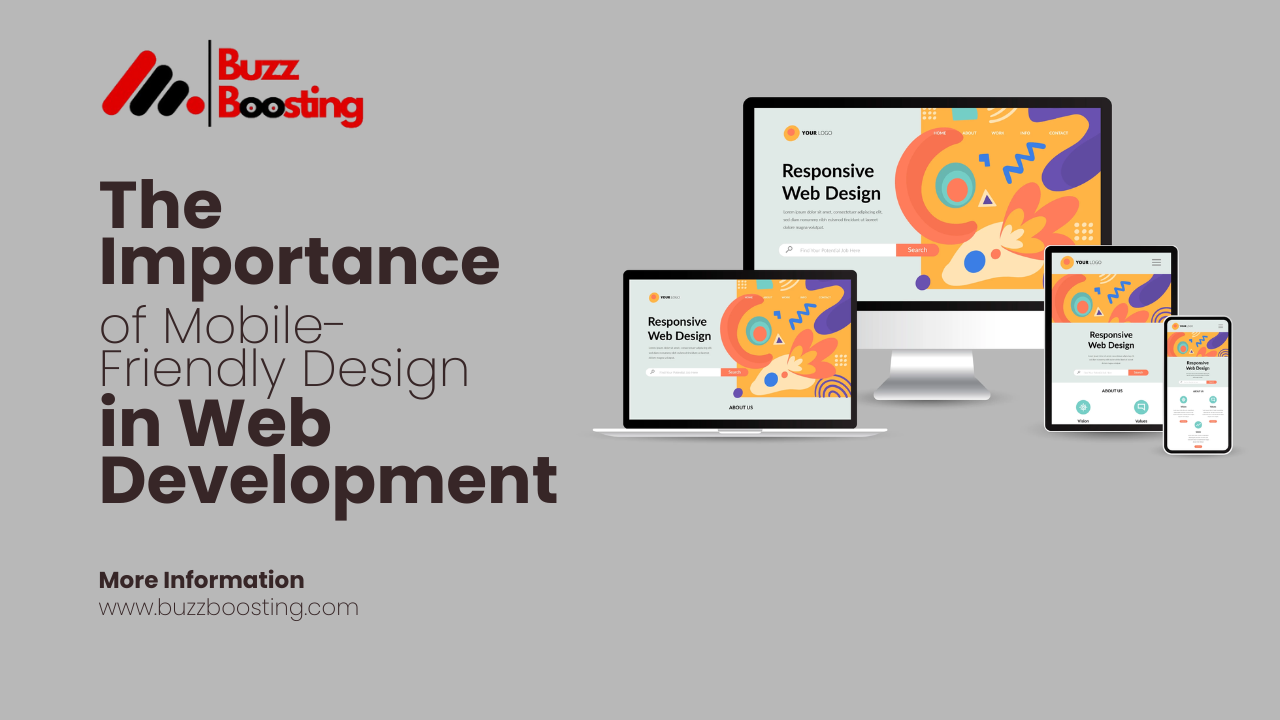In today’s digital age, the way we interact with the internet has undergone a significant transformation. With the proliferation of smartphones and tablets, mobile devices have become an integral part of our daily lives. This shift has fundamentally changed the landscape of web development, making mobile-friendly design not just a luxury, but a necessity. As a leading Website Development Company in Patna, we understand the critical role that mobile-friendly design plays in the success of any online venture.
The Rise of Mobile Usage
The statistics are staggering. According to recent reports, over 50% of global internet traffic now originates from mobile devices. This trend is only expected to grow as more people around the world gain access to smartphones. In fact, in many developing countries, mobile devices are often the primary means of accessing the internet. This shift towards mobile usage has profound implications for businesses and web developers alike.
Why Mobile-Friendly Design Matters
- User Experience: A mobile-friendly design ensures that users have a seamless and enjoyable experience, regardless of the device they are using. This is crucial for maintaining user engagement and reducing bounce rates. A site that is difficult to navigate on a mobile device can frustrate users and drive them away.
- Search Engine Optimization (SEO): Search engines like Google prioritize mobile-friendly websites in their search results. This means that if your site is not optimized for mobile devices, it could be pushed down in search rankings, reducing visibility and potential traffic. By implementing a mobile-friendly design, you can improve your SEO and attract more organic traffic.
- Conversion Rates: A positive user experience on mobile devices can lead to higher conversion rates. Whether you are selling products, providing services, or simply looking to capture leads, a mobile-friendly design can help you achieve your goals more effectively.
- Future-Proofing: As mobile usage continues to grow, having a mobile-friendly design ensures that your website remains relevant and functional in the long term. Investing in responsive design now can save you from costly redesigns in the future.
Implementing Responsive Web Design
Responsive web design is the key to creating a mobile-friendly website. This approach involves designing a website that adapts to different screen sizes and resolutions, ensuring a consistent and optimal user experience across all devices. Here are some tips for implementing responsive design:
- Fluid Grid Layouts: Use fluid grid layouts that adjust based on the screen size. This allows elements to resize dynamically, providing a flexible and responsive design.
- Flexible Images and Media: Ensure that images and other media elements are scalable and responsive. Use CSS techniques to make images resize according to the screen size without losing quality.
- Media Queries: Utilize CSS media queries to apply different styles based on the device characteristics. This allows you to tailor the design for various screen sizes and orientations.
- Touch-Friendly Elements: Design interactive elements like buttons and links to be easily accessible on touch devices. Larger touch targets can improve usability and reduce user frustration.
- Performance Optimization: Optimize your website for performance by minimizing file sizes, using efficient coding practices, and leveraging browser caching. A fast-loading website is essential for a good user experience on mobile devices.
- Testing and Validation: Regularly test your website on various devices and browsers to ensure compatibility and functionality. Tools like Google’s Mobile-Friendly Test can help you identify and fix issues.
Case Studies and Real-World Examples
Many successful businesses have seen significant improvements in their online performance by adopting mobile-friendly designs. For instance, a major e-commerce platform reported a 30% increase in mobile sales after optimizing their website for mobile devices. Similarly, a local business in Patna saw a 25% increase in website traffic and a 15% increase in conversions after implementing a responsive design.
Conclusion
In conclusion, mobile-friendly design is no longer an option but a necessity in modern web development. As a Website Development Company in Patna, we emphasize the importance of responsive design to ensure that our clients’ websites are accessible, user-friendly, and optimized for search engines. By following best practices and staying ahead of mobile trends, you can create a website that not only meets the needs of today’s mobile users but also positions your business for future success.
Investing in a mobile-friendly design is an investment in your business’s future. It enhances user experience, improves SEO, and drives conversions, all of which are critical for growth in the digital age. So, if you haven’t already, it’s time to make your website mobile-friendly and stay ahead of the curve.





